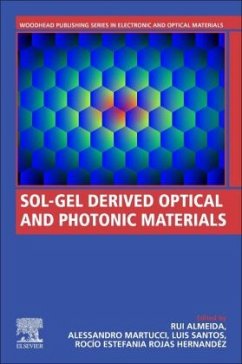Sol-gel processing is a low temperature, low cost wet chemistry route to a range of different materials, particularly glassy and ceramic oxides, including nanoparticles and powders, fibers, thin films and membranes, or monoliths and composites. Thin films and coatings represent by far the most important category of sol-gel derived products with optical, electronic and magnetic functionalities, for example photoresist and dielectric spin-on-glass layers, flat screen displays, anti-reflection, conducting and magnetic disk coatings, as well as photochromic, electrochromic and photovoltaic coatings. Sol-gel derived materials are homogeneous at the molecular level and are a good example of a bottom-up approach to materials synthesis. There is increasing need of new optical and photonic materials with improved performance, where molecular level homogeneity and easy fabrication in film form may be especially convenient, highlighting a decisive advantage of sol-gel over other more established technologies to obtain graded index optical components, solar control coatings, phosphors, glass ceramics or multilayer photonic structures.
There is no book available yet which focuses in particular on optical and photonic sol-gel derived materials. This is what makes this book unique at this point for those especially or exclusively interested in optical and photonic functional materials and applications. This book represents an important tool to update scientists and engineers with recent advances in the rapidly evolving field of optical and photonic materials, components and devices. Our target audience are those working in materials science, physics, engineering and chemistry disciplines, in particular academics and researchers working in advanced optical/photonic processing technologies, research and development engineers in high technology industries and research project leaders. This book will also be an essential tool for graduate students pursuing a PhD or even a Master's degree.
There is no book available yet which focuses in particular on optical and photonic sol-gel derived materials. This is what makes this book unique at this point for those especially or exclusively interested in optical and photonic functional materials and applications. This book represents an important tool to update scientists and engineers with recent advances in the rapidly evolving field of optical and photonic materials, components and devices. Our target audience are those working in materials science, physics, engineering and chemistry disciplines, in particular academics and researchers working in advanced optical/photonic processing technologies, research and development engineers in high technology industries and research project leaders. This book will also be an essential tool for graduate students pursuing a PhD or even a Master's degree.








